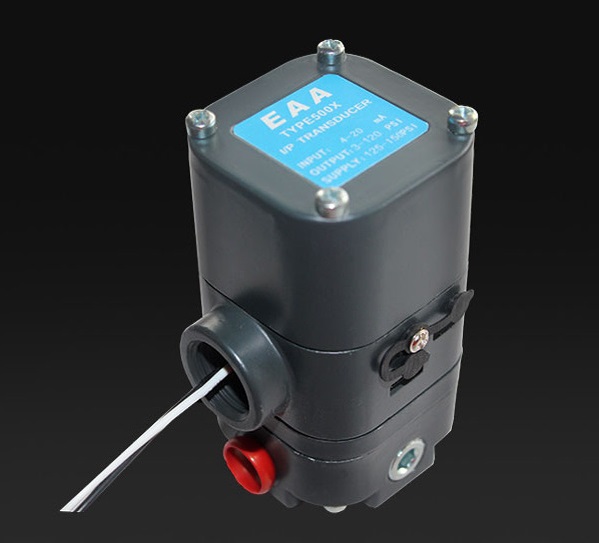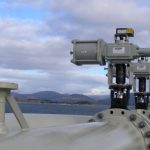HOW ELECTRO-PNEUMATIC TRANSDUCERS WORK
The electro-pneumatic transducer was a workhorse of American industrial automation from the 1950’s through the 1990’s.
These devices were also called:
· current / pressure transducer
· I/P transducer
· voltage / pressure transducer
· E/P transducer
Newer types of electronic pressure regulators (also called electronic pressure controllers), with improved accuracy and precision, have taken over much of the market for these E/P transducers. This page seeks to explain how the original electro-pneumatic transducers worked.
How I/P and E/P Transducers Work
As the names indicate, these devices converted either electrical current (typically 4 – 20 mA) or voltage (typically 0 – 5 VDC or 0 – 10 VDC) into pressure. They worked by creating a force imbalance on a piloted diaphragm by means of a magnetic coil of wire (similar to a speaker coil). Other than the coil, there are no electronic features to control the pressure output. The device works as a simple force mechanical balance with adjustable spring biases for the zero and span.
These devices typically contain a second flow-boosting stage, which uses a force balanced diaphragm and valve seat to generate higher flow rates at the outlet port than would be possible from the smaller first stage valve.
These devices work quite well if properly maintained and frequently calibrated. Indeed, these devices were the basis for the golden age of pneumatic control in the post World War II era, actuating countless control valves and pneumatic cylinders in factories worldwide.
Control technicians were carefully trained to adjust the zero and span screws to obtain the required accuracy and repeatability. Bellofram’s Type 1000 is a classic example of the electro-pneumatic transducer, still available today, with a specified 1% linearity, 1% hysteresis, and 0.5% repeatability. The 3 – 15 psig / .2 – 1 bar(g) output range was a common standard, and most models did not offer output pressures above 40 psig / 2.8 bar(g).
Though these devices are still available, most modern American industries have upgraded to devices with electronic feedback offering higher precision, more repeatability, and less hysteresis.
Pressure Transducers with electronic controllers
During the late 20th century, new types of electronic pressure devices were introduced, sometimes also referred to as “pressure transducers”. These devices used internal pressure sensors to evaluate and correct the output pressure using PID or other algorithms. Some of these devices used new mechanisms such as piezo valves instead of speaker coils to create the internal pilot pressures. As with the original style of pressure transducers, diaphragm based flow boosters were used to increase the flow volume.
These new devices offers significantly improved performance with accuracy approaching that of available pressure sensors (0.1 to 0.25% Full Scale). Hysteresis and impact of supply pressure were also significantly improved.



Comments are closed